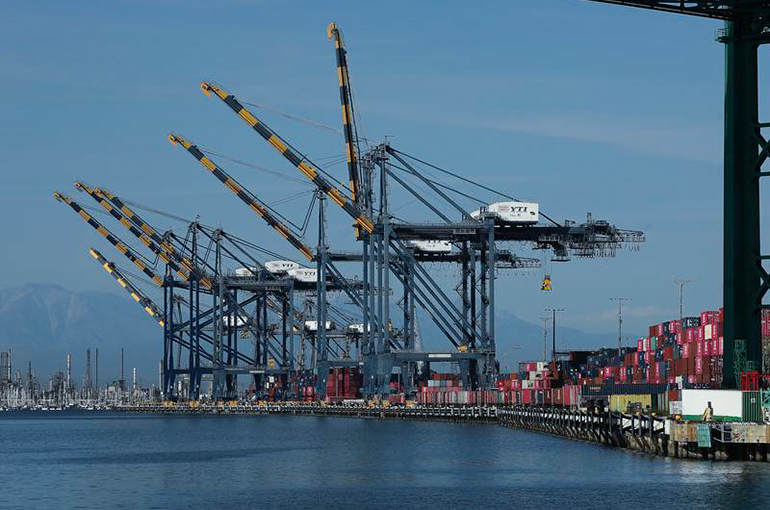 China-US Container Shipping Rates to Go On Soaring Through June, Insiders Say
China-US Container Shipping Rates to Go On Soaring Through June, Insiders Say(Yicai) May 21 -- Container shipping rates on sea routes from China to the United States will continue surging through next month after the two countries agreed to temporarily suspend most tariffs on each other's goods, according to industry insiders.
The average cost for containers shipping out in mid-June has more than quadrupled from early this month, partly because cargo owners want to ensure their goods arrive before the 90-day truce period ends, Shi Jiaqi, head of first-mile operations at Raccoon Shanghai International Logistics, told Yicai.
China and the US announced on May 12 that they have agreed to lower import tariffs on most of each other's products for 90 days, committing to take action by May 14.
"For the 40-foot container route from Shanghai Port to western US ports, the quote for departure on June 1 is USD7,600, rising to USD9,100 on June 15, a faster increase than during the Covid-19 pandemic," Shi noted, adding that the quote for the same route earlier this month was about USD2,250.
Although the quote for late this month is only about USD3,100, "in reality, you can't get space without paying a premium," Shi said. If various temporary surcharges from ports and carriers are included, the freight rate for containers leaving in late June may exceed USD10,000, Shi pointed out.
To secure space at the end of this month, cargo owners need to pay an additional 20 percent to 30 percent on top of the index price, another industry insider said. In addition, no more slots are available for departures before June 15 despite skyrocketing prices, Shi noted.
June to September is traditionally the peak season for shipping to the US, Liu Qifeng, general manager of Southeast Logistics Vietnam's Shanghai branch, told Yicai. The 90-day pause on high tariffs is pushing cargo owners to ship their year-end holiday orders early so as to hedge against the risk of tariffs going back up, which is exacerbating the rush, Liu added.
US buyers typically stock up for two to three months, said Wu Qingfen, general manager of Yiwu Jingwen Import and Export. Due to the steep tariffs, they hardly replenished any inventory for one to two months, so most have pent-up demand from next month onwards, Wu added.
The short-term shortage of shipping capacity is another reason for surging freight rates, noted Chen Yang, head of maritime information consulting platform Maritime Network. After a sharp decline in China-US maritime demand last month, carriers redirected much of their capacity to European routes, and it will take time to bring these back, Chen noted.
“However, the overall transportation volume will likely not increase significantly this year," Chen pointed out, adding that tariff rates are still high, and the trade disruptions will inevitably have a negative impact on global economic performance.
Still, despite the short-term surge in China-US shipping demand, industry watchers are not optimistic about volumes for 2025. “Overall volumes this year may not see a large increase,” Chen said, noting that tariffs remain high and such disruptions ultimately weigh on the global economy.
Editors: Tang Shihua, Martin Kadiev